The AMD Radeon RX 5600 XT Review, Feat. Sapphire Pulse: A New Challenger For Mainstream Gaming
by Ryan Smith on January 21, 2020 9:01 AM ESTSynthetics
Moving on, we have our synthetic performance testing, taking a look at geometry throughput, pixel throughput, memory compression, and more.
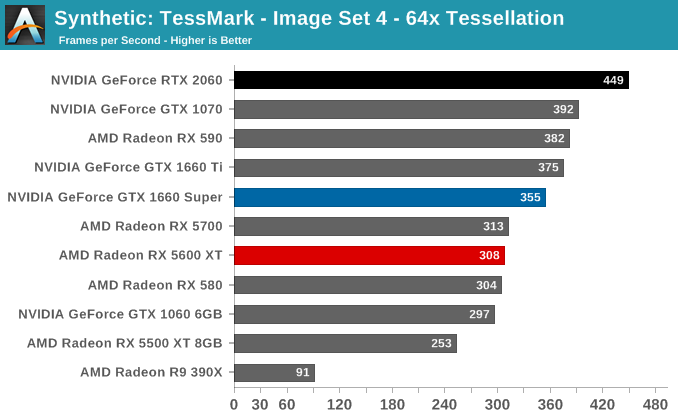
Given the significance of cutting a quarter of Navi 10’s GDDR6 memory bus, I was very curious to see what that would do for synthetic performance. But for better or worse, this has created more questions than it has solved.
The numbers listed below are accurate, in as much as these are the results I get when testing these cards. Whether they are correct, however, is another matter.
The problem, in short, is that due to AMD’s very aggressive power savings/idling implementation for their Navi 10 cards, I have been unable to get these cards to run at their full memory clockspeeds when executing the the Beyond3D Suite benchmark suite. The GPU clocks regularly pass 1600MHz like they should, however AMD’s telemetry is reporting that memory clocks are rarely hitting 7Gbps, let alone 12Gbps+. As a result, we end up with results like the pixel test below, where the RX 5600 XT is beating the RX 5700, an otherwise impossible outcome.
As best as I can tell, this issue has been going on since the launch of the Radeon RX 5700 series back in July, but it’s only now that I’ve noticed it, in large part due to the RX 5600 XT cards being slightly less aggressive in their idling. In other words, those cards are boosting to higher memory clockspeeds more often, putting them ahead of the RX 5700 and bringing the clocking issue front and center.
I’m still working on a proper fix for the issue, but for now the results with Navi 10 cards should be taken with a large grain of salt. The benchmark itself is still fine, but AMD’s aggressive power management (and lack of an easy means to disable it) is kneecapping AMD’s performance in these benchmarks.
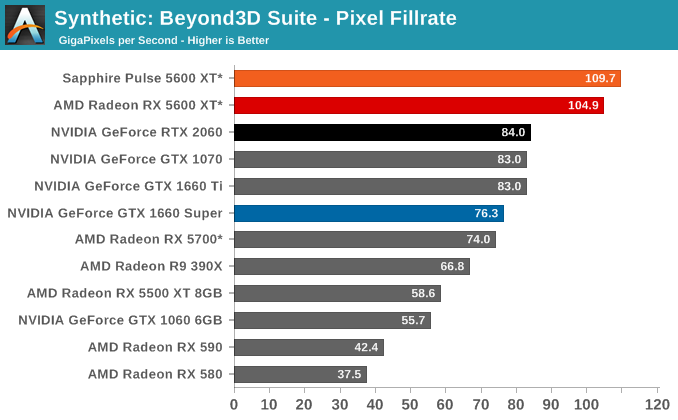

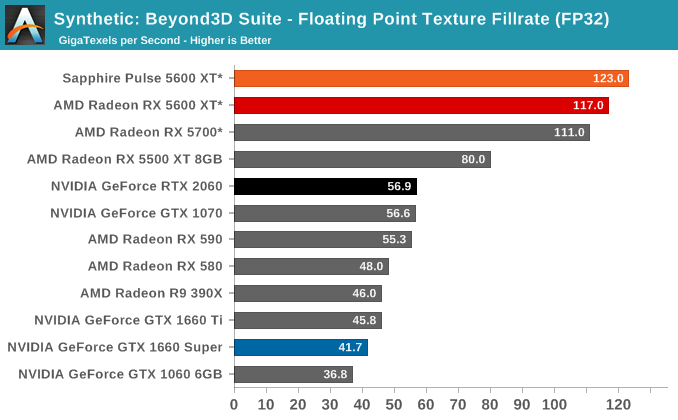
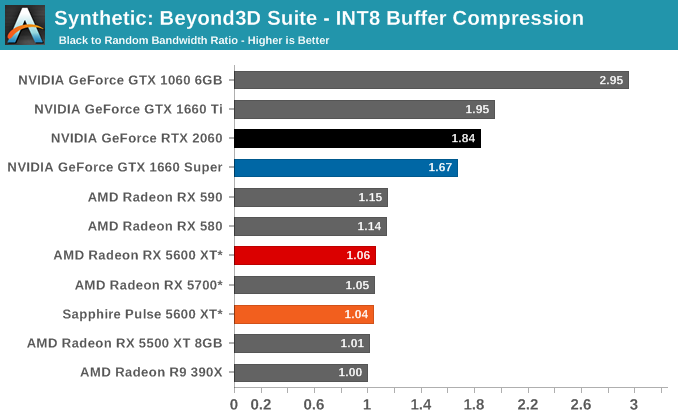
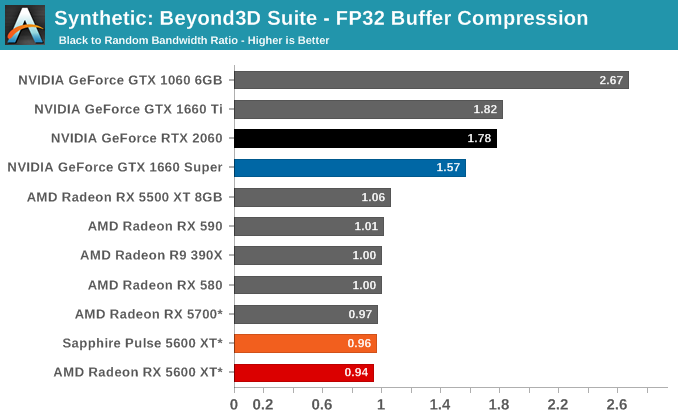










202 Comments
View All Comments
Korguz - Wednesday, January 22, 2020 - link
TheinsanegamerN but the everage user.. wont overclock.. so thats not really valid....haukionkannel - Thursday, January 23, 2020 - link
There Are test where there Are OC 5600xt and OC 2060 And They were quite near each others!For example Hardware Unboxing did use OC msi cards from both gpu manufacturers.
Spunjji - Wednesday, January 22, 2020 - link
I'm guessing the answer most would give is "because RTX", even though that doesn't become a remotely sensible answer until the 2070 Super.Marketing - it works.
V1tru - Wednesday, January 22, 2020 - link
I would invest the 20 bucks for Raytracing.Same story with my choise, I spent 80 bucks more to get 2070S over 5700 XT for Raytracing and better cooling, so competition here look like balanced
supdawgwtfd - Wednesday, January 22, 2020 - link
Raytracing on a 2060 is pointless.It doesn't have enough grunt.
It should be ignored as a feature as it cannot be used without giving up a lot of other arguably more important things (FPS, resolution etc).
MASSAMKULABOX - Monday, January 27, 2020 - link
Yes 2060 ray tracing is all but useless .. altho the 2060 w/o RT is faster than the 1660ti. The 2060KO uses a 2080 chip with some features cut out so is not a directKorguz - Tuesday, January 28, 2020 - link
you have a link for this.. i cant seem to find anything on it.. so either its evga just naming the card that, or its as you say...sonny73n - Thursday, January 23, 2020 - link
So you’re comparing vanilla to overclocked. Irrelevant. Next!schujj07 - Thursday, January 23, 2020 - link
OC in name only. AMD must have figured that nVidia would drop the price of the 2060 otherwise they wouldn't have had the vBIOS available right after the price drop announcement. My assumption is further confirmed by the chip coming with 14Gbps RAM that had been down clocked to 12Gbps with the original BIOS. Had they not planned on releasing the vBIOS getting 12Gbps RAM instead of 14Gbps would have reduced the cost of the card.flyingpants265 - Thursday, January 23, 2020 - link
Because $20 is not a large difference at all? And 2060 belongs to a much larger, more reliable brand?